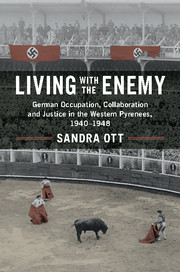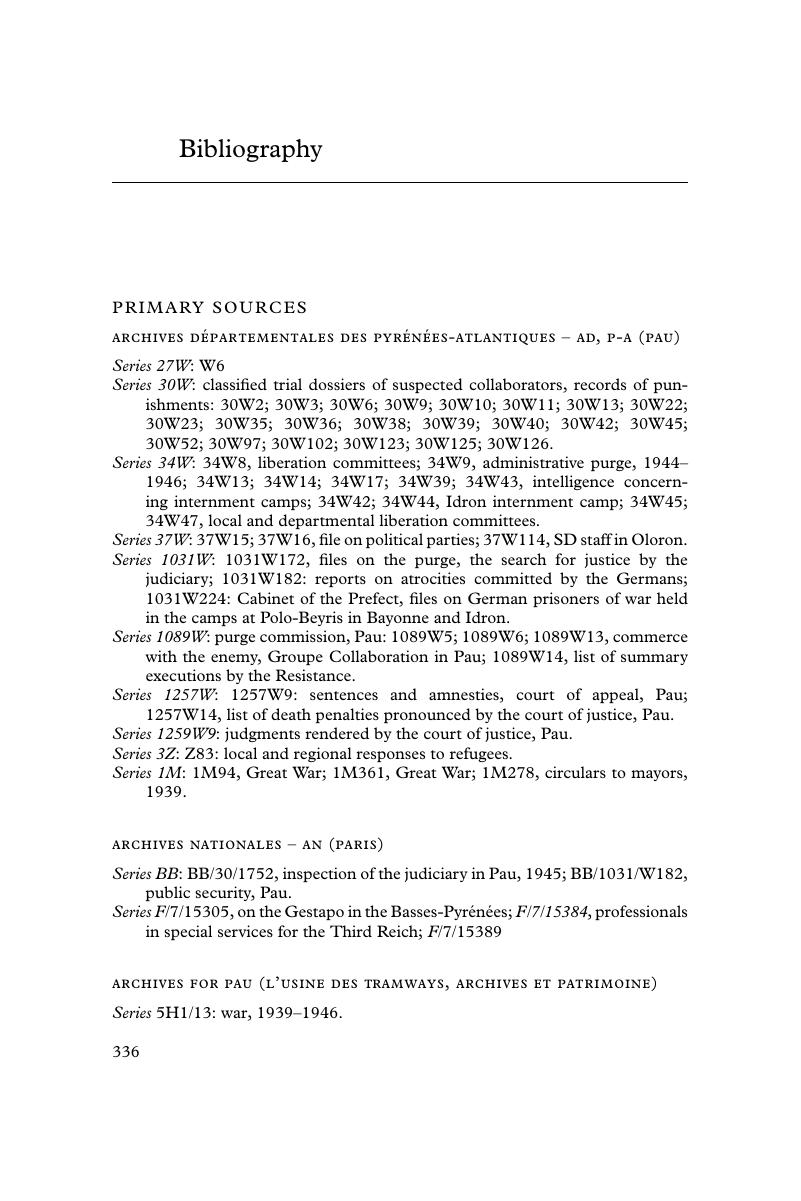 Living with the Enemy
Living with the Enemy Book contents
- Living with the EnemyGerman Occupation, Collaboration, and Justice in the Western Pyrenees, 1940–1948
- Living with the Enemy
- Copyright page
- Dedication
- Contents
- Abbreviations
- Maps
- Principal Personalities in the Narratives
- Acknowledgments
- Maps
- Introduction
- Part I The Context
- Part II The Narratives and the Trials
- Part III Conclusions
- Bibliography
- Index
- Plate section
- References
Bibliography
Published online by Cambridge University Press: 07 June 2017
- Living with the EnemyGerman Occupation, Collaboration, and Justice in the Western Pyrenees, 1940–1948
- Living with the Enemy
- Copyright page
- Dedication
- Contents
- Abbreviations
- Maps
- Principal Personalities in the Narratives
- Acknowledgments
- Maps
- Introduction
- Part I The Context
- Part II The Narratives and the Trials
- Part III Conclusions
- Bibliography
- Index
- Plate section
- References
Summary

- Type
- Chapter
- Information
- Living with the EnemyGerman Occupation, Collaboration and Justice in the Western Pyrenees, 1940–1948, pp. 336 - 348Publisher: Cambridge University PressPrint publication year: 2017
